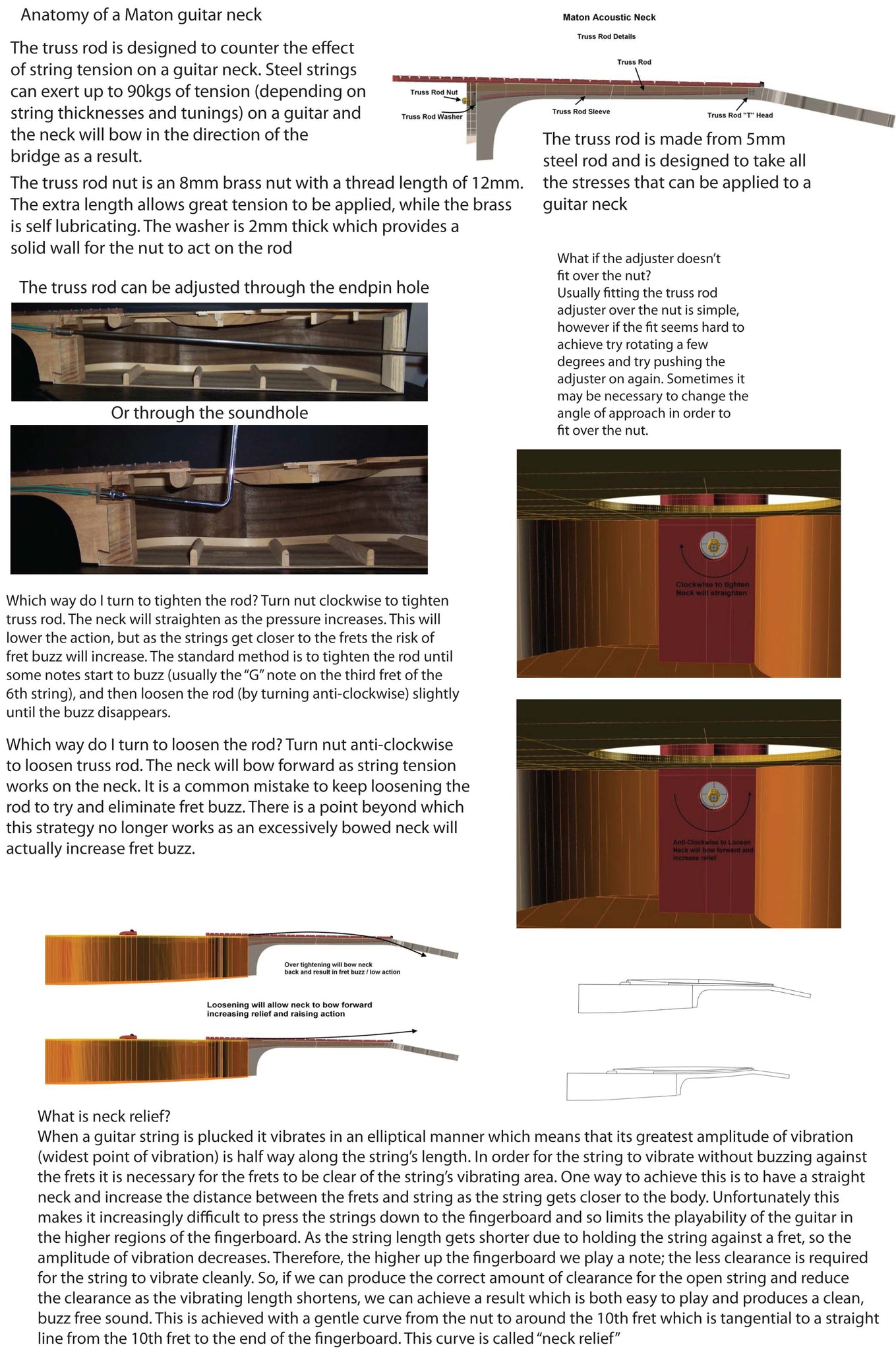
How to adjust the truss rod on your Maton Guitar
In this video we are adjusting the truss rod to lower the action from standard factory string height.
• Standard setup on a guitar is calculated & measured at the 12th fret, (halfway the length of the strings).
• Measurement is taken from top of the 12th fret to bottom of the string.
• Maton factory setup (which includes some positive relief):
- Low E = 3/32"
- High E = 5/64"
Chapter One, adjusting the truss rod on a full size Maton using the Maton truss rod tool.
Chapter Two, adjusting the truss rod on a Maton Mini, using an 8mm wrench.
From the Maton website:
"This guide was created as a resource for those people asking for information on how to adjust the truss rod on a Maton guitar. It is not a technical manual, nor is it intended to replace the skills of a trained luthier or guitar repairer. It takes years of experience to fully understand the mysteries of a guitar neck and setup and for optimum results we thoroughly recommend the services of a qualified, authorized repairer / setup technician. However, if you use the information below, and proceed carefully, you will be able to adjust a Maton neck so that it performs reasonably well, and with some practice you should be able to “tweak” the neck as your guitar goes through subtle changes due to climatic changes or changes in string tension.
Guitars do most of their movement when they are brand new and the woods in the neck are adjusting to string tension. Therefore it is common for a new guitar to need one or two truss rod adjustments in the first few months of their life. These adjustments usually consist of tightening the truss rod to counter neck bow. Once this settling period is over a Maton neck will stabilize and need very few adjustments from then on.
Truss rod adjustments are also often needed if the guitar has a low action and is used for different tunings (eg: DADGAD or “open G”). It is advisable for players who move between tunings to have their guitar set up a little higher than standard so that notes do not “buzz out” when the guitar is down tuned. Guitars that are set up with a very low action and move through a variety of climates (eg: a touring guitar player) can require adjustment from time to time to maintain optimum playability and it is advisable for a traveling musician to carry a truss rod adjuster at all times."




